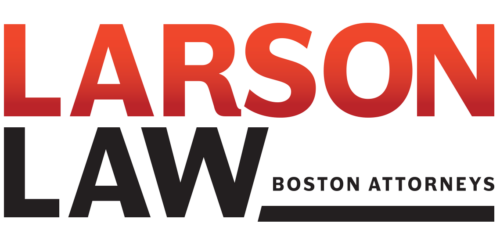Trademark Law
Trademark Search, Trademark Application,
Registration & Protection

Professional Trademark Law Services
Protect and Register Your Trademark Now
The Trademark Search Process
- Preliminary Search:
-
- The process begins with a preliminary search to identify identical or closely similar trademarks that may pose a potential conflict. This involves searching the USPTO’s database of registered and pending trademarks.
-
Comprehensive Search:
- A more comprehensive search follows, examining a broader range of databases, including state trademark offices, domain name registrations, and common-law sources. This step helps identify potential conflicts that may not be evident in the USPTO database alone.
-
Evaluation of Search Results:
- The results are carefully evaluated by our firm to identify any trademarks that may be confusingly similar to the proposed mark. The evaluation considers factors such as similarity in sound, appearance, and meaning, as well as the relatedness of goods or services. An important standard evaluated by the USPTO examining attorney is likelihood of consumer confusion between the proposed mark and other pending or registered marks.
-
Legal Analysis:
- Legal professionals experienced in trademark law analyze the search results to provide a nuanced understanding of potential risks and conflicts. This analysis helps clients make informed decisions about proceeding with their chosen mark.
-
Reporting to the Client:
- A comprehensive report is generated and provided to the client, detailing the findings of the search. This report includes information on existing trademarks that may pose a challenge to registration, along with legal opinions and recommendations.
Why a Trademark Search is Important
-
Risk Mitigation:
- Perhaps the most significant benefit is the ability to identify potential conflicts and risks early in the trademark registration process. This proactive approach helps clients avoid legal disputes and challenges that could arise after the mark has been in use.
-
Cost Savings:
- Conducting a USPTO trademark search upfront can save businesses significant costs associated with rebranding, legal disputes, and potential fines for trademark infringement. It allows clients to make informed decisions before investing in marketing and promotional efforts.
-
Increased Registration Success:
- A thorough knockout search increases the likelihood of a successful trademark registration. By avoiding conflicts with existing marks, clients can streamline the registration process and secure exclusive rights to their chosen mark.
-
Brand Protection:
- Protecting the brand’s integrity and reputation is crucial for long-term success. A USPTO trademark search ensures that the chosen mark is unique, reducing the risk of confusion in the marketplace and preserving the brand’s distinctiveness.
-
Strategic Decision-Making:
- Armed with the information from the search, clients can make strategic decisions about their branding strategy. They can choose to modify the proposed mark, explore alternative options, or proceed with confidence, knowing the potential risks and challenges.
In conclusion, a USPTO trademark and knockout search is a valuable investment for any business or individual seeking to register a trademark. It is a proactive and strategic step that not only helps in navigating the complex landscape of trademark law but also ensures the long-term success and protection of the brand.
Trademark Application and Registration Process
1. Prepare the Application
- Determine the Filing Basis:
- Use in Commerce: If the mark is already in use in connection with the goods or services, file a use-based application.
- Intent to Use: If the mark is not yet in use but there is a bona fide intent to use it, file an intent-to-use (ITU) application.
- Prepare and File the Trademark Application:
- Select the Application Form: Use the Trademark Electronic Application System (TEAS) to choose between the TEAS Plus and TEAS Standard forms.
- Provide Applicant Information:
- Include details about the applicant, including name, address, and entity type.
- Identify the Mark:
- Clearly describe and provide a visual representation of the mark.
- Specify Goods/Services:
- Categorize and describe the goods or services associated with the mark. This is a critical aspect of the application and can be the difference between approval or rejection.
- Choose Filing Basis:
- Indicate whether the application is based on use in commerce or an intent to use.
- Pay Filing Fee:
- Pay the required filing fee, which varies based on the filing basis and the number of classes of goods/services.
2. USPTO Examination:
- Examination by an Attorney:
- An Examining Attorney at the USPTO reviews the application for compliance with legal requirements.
- They assess the mark’s distinctiveness and check for potential conflicts with existing trademarks.
- If issues are identified, the applicant receives an Office Action outlining concerns that need to be addressed.
3. Publication for Opposition:
- Official Gazette Publication:
- If the application passes examination, it is published in the USPTO’s Official Gazette.
- This serves as public notice, allowing third parties to oppose the registration if they believe it may harm their existing rights.
- Opposition proceedings may extend the registration process.
4. Statement of Use or Amendment to Allege Use:
- Use-Based Applications:
- If the application is use-based, submit a Statement of Use (SOU) with evidence of the mark’s use in commerce.
- Intent-to-Use Applications:
- If the application is intent-to-use, submit an Amendment to Allege Use once the mark is used in commerce.
- Additional Documents:
- Include specimens of use and other required documentation.
5. Registration and Issuance of Certificate:
- Registration Approval:
- If the USPTO finds that all requirements have been met, the mark is registered.
- Issuance of Certificate:
- A registration certificate is issued, providing legal evidence of the mark’s registration.
6. Maintaining and Renewing the Registration:
- Affidavit of Continued Use:
- Between the 5th and 6th years after registration and every 10 years thereafter, file an affidavit of continued use and/or renewal to maintain the registration.
- Failure to file required documents can result in the cancellation of the registration.
7. Post-Registration Monitoring and Enforcement:
- Monitor for Infringement:
- Regularly monitor the marketplace for potential infringing uses of your mark.
- Enforce Trademark Rights:
- Take legal action against infringing parties to protect and enforce your trademark rights.
The trademark application and registration process with the USPTO is complex and involves various stages. Each step requires careful attention to detail, and applicants are encouraged to seek legal guidance to navigate potential challenges and ensure compliance with all requirements. By following this comprehensive process, businesses can secure and protect their trademarks, building a strong foundation for brand recognition and success.
Trademarks play a crucial role in safeguarding specific forms of intellectual property by preventing unauthorized entities from capitalizing on your distinctive brand. The scope of trademark law extends to symbols, words, designs, phrases, names, and logos, among others. By registering your trademark with the U.S. Patent and Trademark Office, you can ensure its protection against unauthorized usage for ten years, which can be further renewed.
Establishing a trusted brand not only enhances your credibility but also instills consumer confidence in your products or services. Trademark law serves as a deterrent against unfair competition by safeguarding the unique features of your brand.
While registering your trademark with the U.S. Patent and Trademark Office is not mandatory, it can fortify your defense against infringement, thereby mitigating potential losses.
Reasons Why You Should Register Your Trademarks
- Registered trademarks include a notice to the public of the registrant’s claim of ownership.
- Registration provides the registrant with legal presumption of ownership nationwide.
- Registration grants exclusive ownership to the registrant to use the trademark in connection with the goods and services he or she provides.
- The registrant may sue for infringement and put a stop to infringing items.
- Although registering a trademark offers several advantages, it can pose significant challenges to individuals or businesses that are unfamiliar with trademark law. With the increasingly rapid growth of new products and businesses, it becomes imperative to ensure the distinctiveness of your trademarked material from others, even prior to registration.
- As you put in efforts to build your brand, others might attempt to exploit it for their gains. Our attorneys bring a wealth of experience in registering and enforcing trademarks for businesses of all sizes. The name of your business, its logo, and other potentially trademarked assets are among the most valuable possessions, and it’s crucial to prevent others from taking advantage of your hard work. Should you wish to discuss registering a trademark or concerns about potential infringement of your trademarks, we encourage you to call us at (617) 932-6169.
Larson Law's Trademark Services
- Trademark Clearance Searches and Registrations
- USPTO Office Action Responses
- Trademark Monitoring
- Trademark Litigation
- Other Trademark Services



